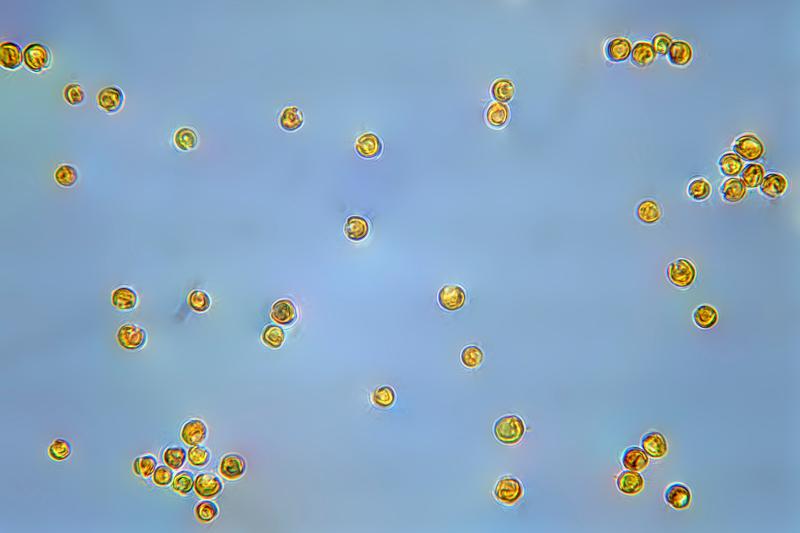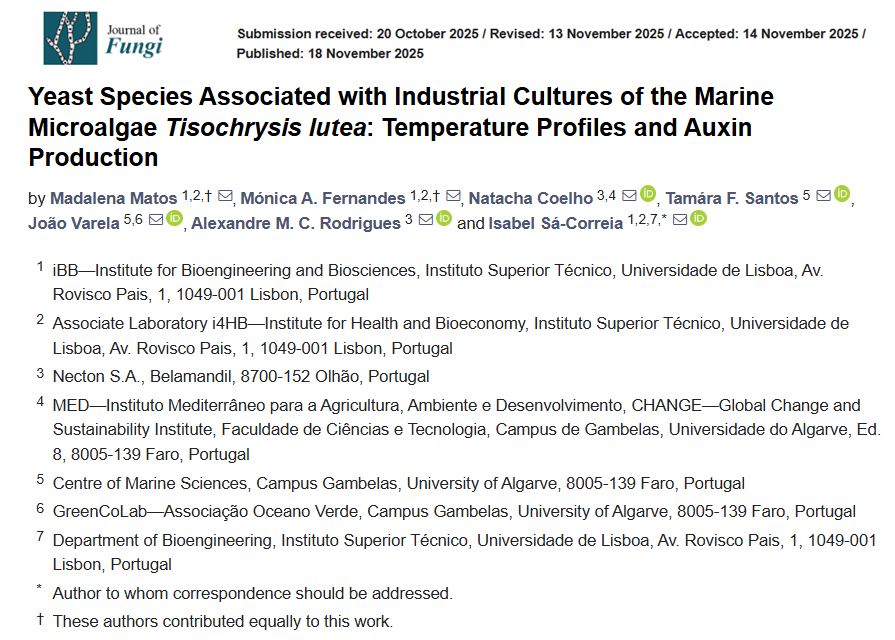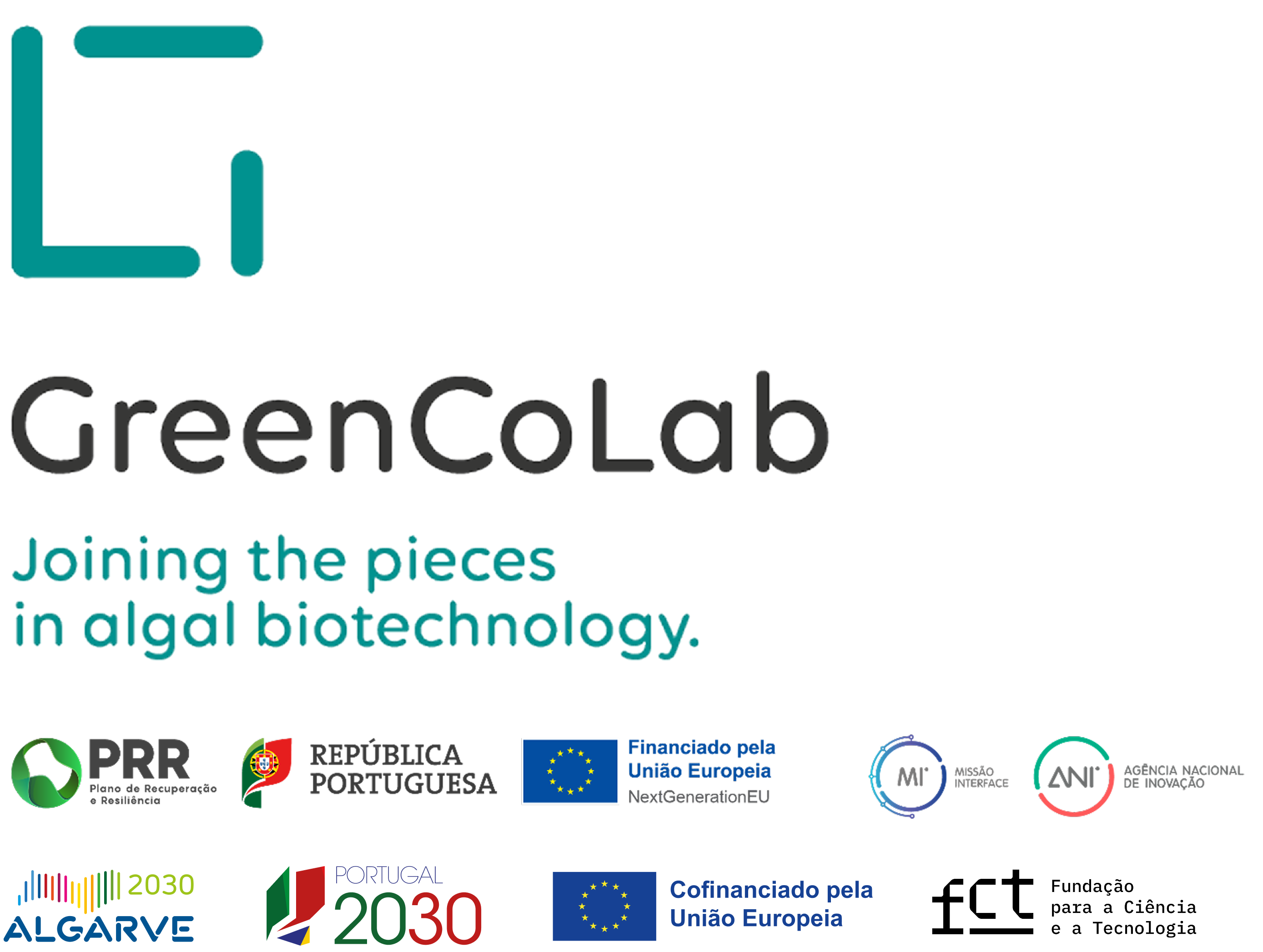

TITLE
Yeast Species Associated with Industrial Cultures of the Marine Microalgae Tisochrysis lutea: Temperature Profiles and Auxin Production
JOURNAL
Journal of Fungi
AUTHORS
Madalena Matos, Mónica A. Fernandes, Natacha Coelho, Tamára F. Santos, João Varela, Alexandre M. C. Rodrigues, Isabel Sá-Correia
ABSTRACT
This study provides the first systematic characterization of culturable yeast diversity associated with large-scale cultivation of Tisochrysis lutea. This marine haptophyte is widely used in aquaculture for its high content of essential fatty acids, pigments, and other bioactive compounds. Culture sampling was conducted at Necton S.A. facilities (Olhão, Portugal) over full production cycles from 5 L flasks until tubular photobioreactors during the months of May and June. The study aimed to identify and isolate the present yeast species and evaluate their physiological traits relevant to potential co-cultivation strategies. All retained isolates belonged to the phylum Basidiomycota, with six species identified: Rhodotorula sphaerocarpa (45%), R. mucilaginosa (20%), R. diobovata (13%), Vishniacozyma carnescens (16%), Naganishia diffluens (3%), and Moesziomyces aphidis (3%). Temperature growth profiles (10–40 °C), tolerance to artificial sea water, and auxin production were characterized, revealing that, except for V. carnescens, the yeast isolates grow optimally at 25–30 °C, within the ideal range for T. lutea cultivation. Results suggest that some of these marine yeasts, particularly R. sphaerocarpa and R. mucilaginosa isolates, could serve as biological enhancers of algal productivity, in situ. This foundational work supports future efforts to develop targeted yeast management or co-cultivation strategies, with the goal of improving biomass yield and metabolite production in industrial T. lutea photobioreactors.



